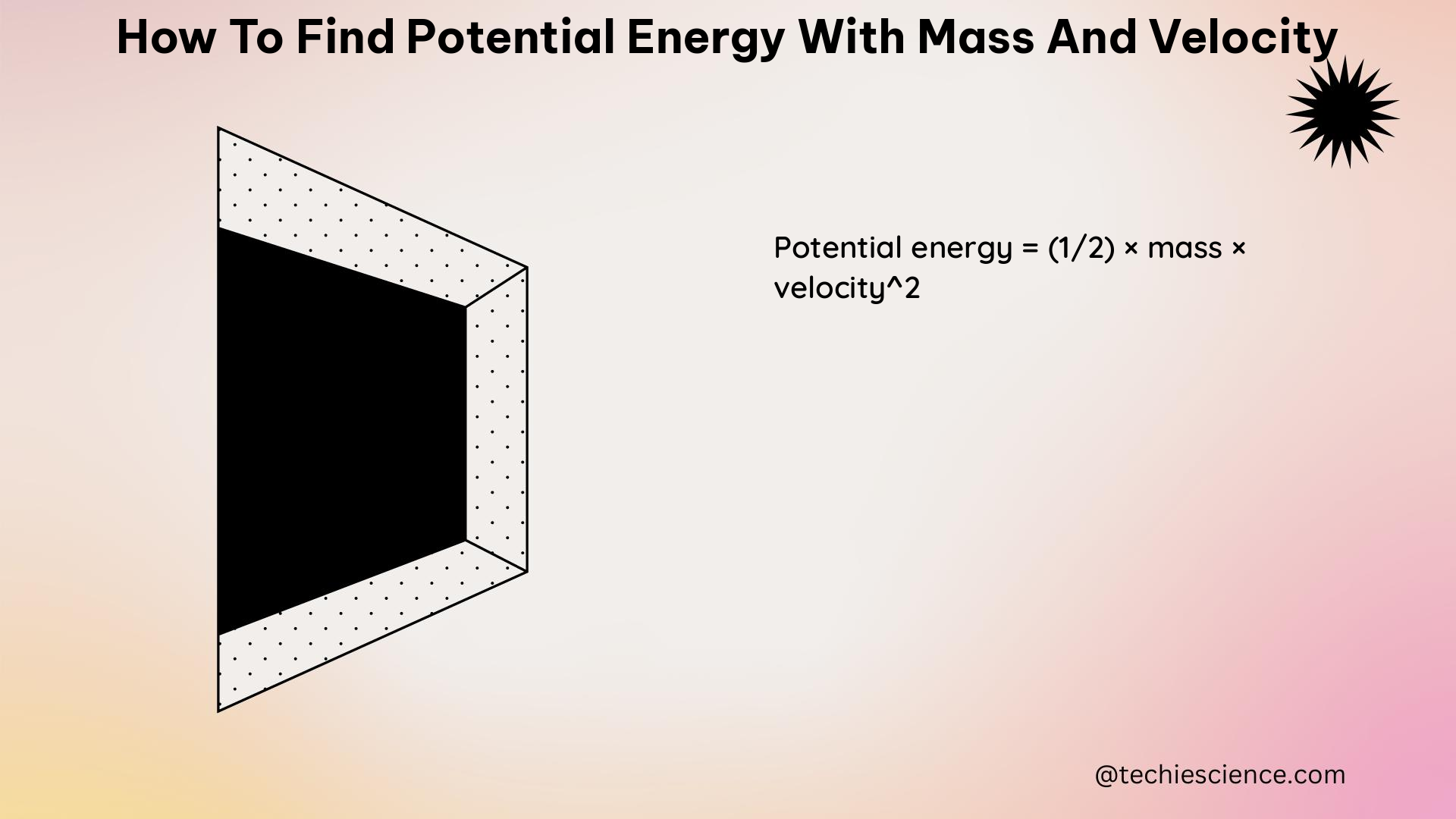Potential energy is a fundamental concept in physics, and understanding how to calculate it using mass and velocity is crucial for various applications, from engineering to sports. In this comprehensive guide, we will delve into the formulas, theorems, and practical examples to help you master the art of finding potential energy with mass and velocity.
Understanding Gravitational Potential Energy
Potential energy, in the context of mass and velocity, typically refers to gravitational potential energy. This type of potential energy is the energy an object possesses due to its position or configuration relative to the Earth’s surface. The formula to calculate gravitational potential energy is:
PE = mgh
where:
– PE is the potential energy
– m is the mass of the object
– g is the acceleration due to gravity (approximately 9.8 m/s² on Earth)
– h is the height above the ground
By knowing the mass and height of an object, you can calculate its potential energy using this formula.
Conversion of Potential Energy to Kinetic Energy

When an object with potential energy is released, it accelerates due to gravity, converting its potential energy into kinetic energy. Kinetic energy is the energy of motion, and its formula is:
KE = 1/2 mv²
where:
– KE is the kinetic energy
– m is the mass of the object
– v is the velocity of the object
As the object falls, its potential energy decreases, and its kinetic energy increases, following the Law of Conservation of Energy.
Theorem: The Law of Conservation of Energy
The theorem related to potential energy and kinetic energy is the Law of Conservation of Energy. This law states that energy cannot be created or destroyed, but it can be transferred or converted from one form to another. In the context of potential and kinetic energy, as an object falls from a height, its potential energy is converted into kinetic energy.
Physics Formulas
The key formulas you need to know for finding potential energy with mass and velocity are:
- Potential Energy:
PE = mgh - Kinetic Energy:
KE = 1/2 mv²
These formulas will be the foundation for your calculations and understanding of the relationship between potential energy, mass, and velocity.
Physics Examples
One of the best examples to illustrate the conversion of potential energy to kinetic energy is a roller coaster. At the start of the ride, the cars are lifted to a high point, giving them potential energy. As they descend, the potential energy is converted into kinetic energy, causing the cars to accelerate.
Another example is a ball rolling down a hill. As the ball moves downhill, its potential energy decreases, and its kinetic energy increases.
Physics Numerical Problems
-
A 2 kg mass is at a height of 15 meters. What is its potential energy?
PE = mgh
PE = (2 kg) * (9.8 m/s²) * (15 m)
PE = 294 Joules -
A 10 kg mass is moving at a velocity of 5 m/s. What is its kinetic energy?
KE = 1/2 mv²
KE = 1/2 * (10 kg) * (5 m/s)²
KE = 125 Joules
These examples demonstrate how to apply the formulas to calculate potential and kinetic energy based on the given mass and velocity (or height) information.
Figures and Diagrams
A simple diagram illustrating the conversion of potential energy to kinetic energy could be a ball rolling down a hill. As the ball moves downhill, its potential energy decreases while its kinetic energy increases.
Data Points, Values, and Measurements
To accurately calculate potential and kinetic energy, you need to have precise measurements of the following parameters:
- Mass (in kilograms)
- Height (in meters)
- Velocity (in meters per second)
Ensuring that the measurements are taken in consistent units is crucial for obtaining accurate results.
Theoretical Explanation
The theoretical explanation for the conversion of potential energy to kinetic energy is based on the Law of Conservation of Energy. As an object with potential energy descends, its potential energy is converted into kinetic energy, which is the energy of motion. This conversion continues until all the potential energy has been converted, at which point the object reaches its maximum kinetic energy.
Technical Specifications
To accurately measure potential and kinetic energy, you will need the following equipment:
- A precise scale to measure mass (in kilograms)
- A ruler or altimeter to measure height (in meters)
- A stopwatch or motion sensor to measure velocity (in meters per second)
Ensuring that the measurements are taken in consistent units is crucial for obtaining accurate results.
Reference Links
- Khan Academy: Potential Energy and Kinetic Energy
- HyperPhysics: Potential Energy
- Physics Classroom: Potential and Kinetic Energy
By understanding the formulas, theorems, and practical examples presented in this guide, you will be well-equipped to tackle problems involving the calculation of potential energy using mass and velocity. Remember to practice regularly and apply the concepts to real-world scenarios for a deeper understanding of this fundamental physics topic.

The lambdageeks.com Core SME Team is a group of experienced subject matter experts from diverse scientific and technical fields including Physics, Chemistry, Technology,Electronics & Electrical Engineering, Automotive, Mechanical Engineering. Our team collaborates to create high-quality, well-researched articles on a wide range of science and technology topics for the lambdageeks.com website.
All Our Senior SME are having more than 7 Years of experience in the respective fields . They are either Working Industry Professionals or assocaited With different Universities. Refer Our Authors Page to get to know About our Core SMEs.